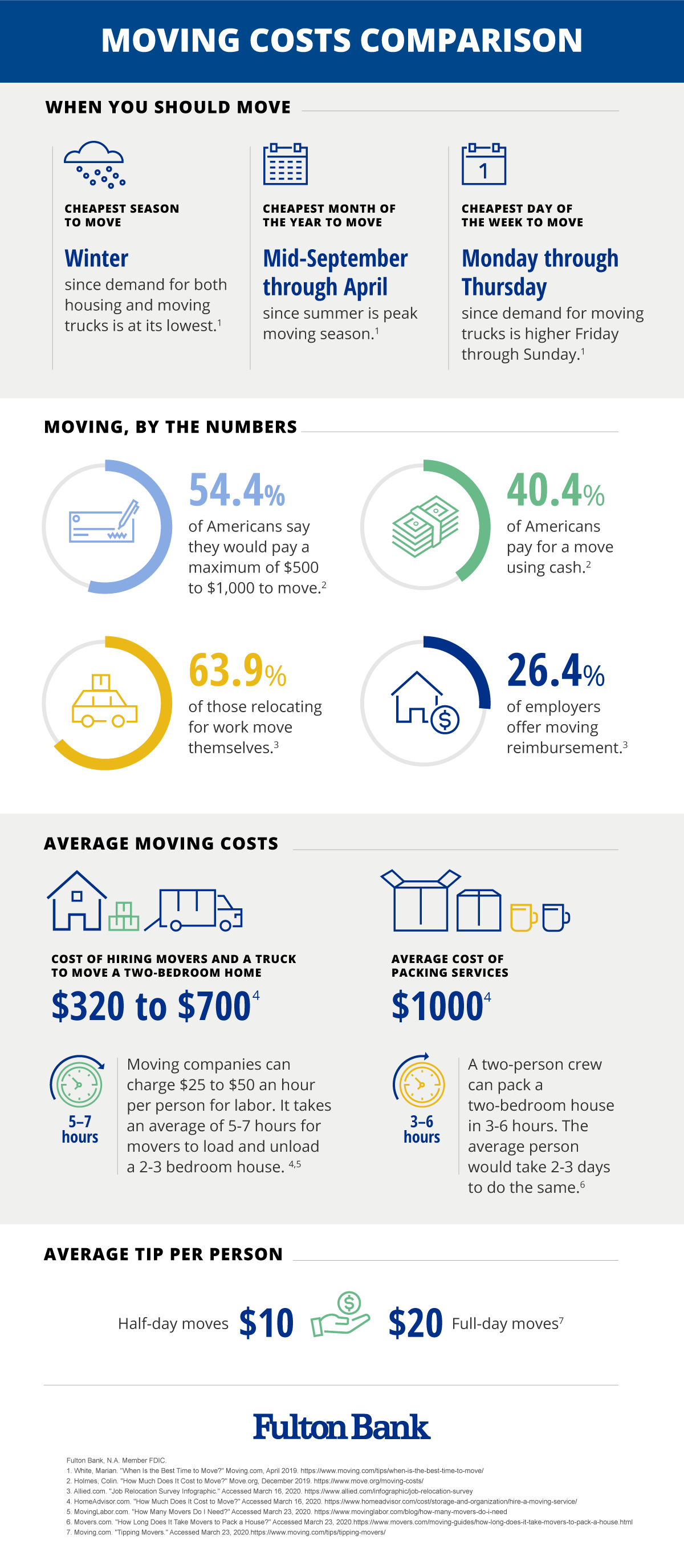Save money with DIY moving
Moving can be expensive, so a large percentage of people opt for a DIY move. The average full-service in-town move can cost anywhere from $550 to $2,000, according to Move.org, and that's before you pay for additional services like packing, insurance, and tipping. Skipping the moving company and doing it yourself could cut down what you spend by a wide margin. With careful planning, you can save money—and your sanity. Here are six tips to help:
1. Make money while saving money
A simple way to save money on a DIY move is to have less stuff to take along. Spending time decluttering your home room by room can help you get rid of excess belongings, so you have fewer things to box up later.
Sort items into categories:
- Keep
- Sell
- Donate
- Throw away
Listing unwanted items for sale online or using a reselling app (there are several) can be a great way to lighten your load and pocket some cash.
2. Get creative with packing materials
Making a move means you'll need certain supplies—boxes, packing tape, and bubble wrap—but it doesn't necessarily mean you have to spend a lot of money to acquire them.
Grocery stores, furniture stores, and liquor stores, for example, are good places to get boxes for free. U-Haul offers a box exchange program to connect people who have recently moved with people who are planning a move to pass along boxes and other packing supplies.
If you're looking for other packing materials, such as tape or bubble wrap, those might be harder to come by for free. But you could still find bargains by shopping for them at dollar stores, or by buying in bulk online or at a warehouse store.
And if you need to cushion fragile items, consider using things you already have on hand. Blankets, comforters, and pillows, for example, can be used to pad boxes and keep your breakables from getting bounced around.
3. Consider timing when planning your move
You may not be able to control the time of year that you need to move, but if you can, October through April are the cheapest months of the year to move because demand for housing and trucks are both at their lowest during winter months. If you have to move during peak summer months, consider moving during the middle of the week rather than on a weekend. Demand for trucks and movers goes up Friday through Sunday, so Monday and Thursday are your best bet for scheduling movers at a reasonable price.
4. Decide if you really need a moving van
Renting a van for a local move can cost $132 to $336 on average. If you're trying to save money, you could skip the van and borrow a truck or trailer from someone you know to haul your stuff to your new place.
The upside of going this route is that you're not spending money on a moving van. The downside is that you might have to make multiple trips to get everything moved. Consider the cost of gas and the number of trips when deciding.
If you're planning to use your car or borrow a truck from a friend, keep these tips in mind:
- Check the tire pressure to make sure tires are properly inflated if you're planning on hauling a heavy load.
- Use appropriate tie-downs to keep things from flying out of truck beds or trailers.
- Balance your packing so the vehicle isn't overweighted on one side.
- Use bags instead of boxes for flexible items to create more space.
5. Tap the right people for help
In addition to the cost of the moving truck, hiring movers can be expensive. According to HomeAdvisor, hiring professional packers can cost anywhere from $500 to $900 for a two-bedroom home. Local movers often charge $25 to $50 per hour for labor. If you have a fixed budget for movers, you can request that they only work a set number of hours. Even if they don't move everything, they can help you with the largest items. Keep in mind that drive time between the homes is billable.
Some people consider the cost worth it so they don’t have to do any of the heavy lifting, but if you don't have the extra money to spend on movers, then you might skip the professional packers and loaders/unloaders and ask friends and family for help instead.
When friends and family aren't close by or available, cast a wider net. You can also reach out to local churches or volunteer organizations. If all else fails and you need to hire movers, look for smaller, local companies that may be more reasonably priced.
6. Get your employer to assist with some of the costs
If a job change is the reason for your move, it's a good time to review your benefits package. According to a job relocation survey conducted by Allied, around a quarter of employers offer moving reimbursement benefits. The range of benefits offered by employers include temporary living assistance and miscellaneous expense reimbursement.
Finding out if you have these benefits available may be as simple as contacting your company's human resources department. Taking advantage of moving reimbursement, along with putting these other tips to work, can help make a DIY move less stressful where your budget is concerned.
Overall, a number of factors influence how much a move really costs. It’s up to you to determine the amount of time, money, and effort you’re willing to spend. Check our infographic for moving cost comparisons and the least expensive times to move.





